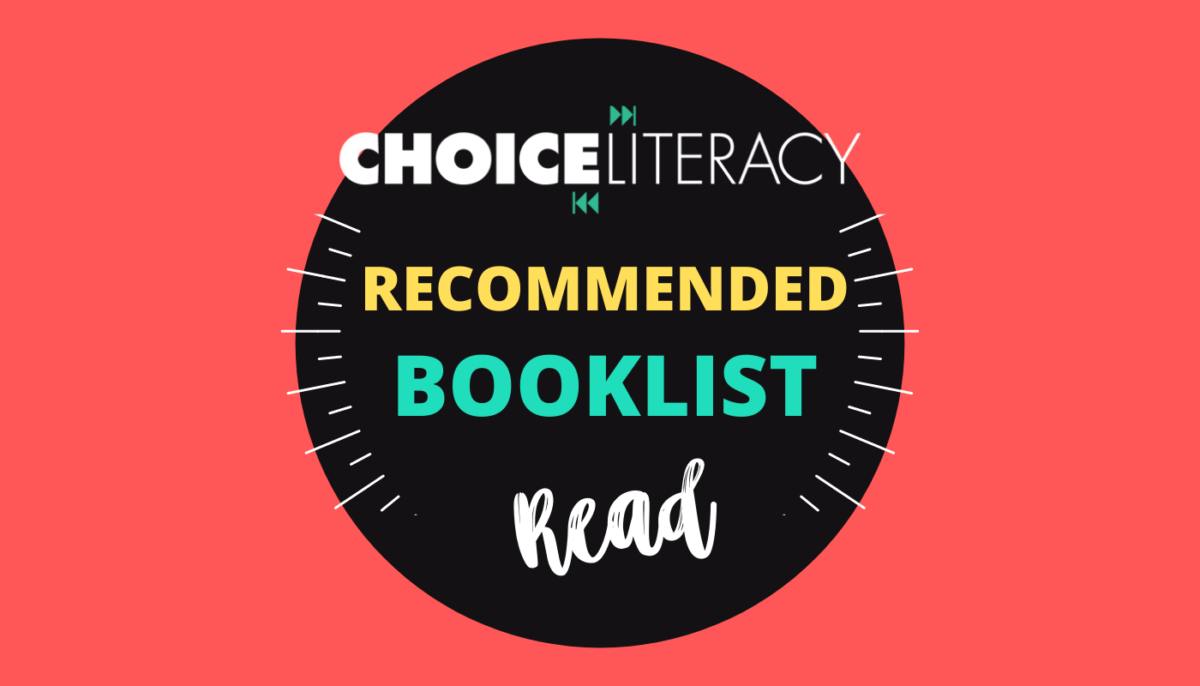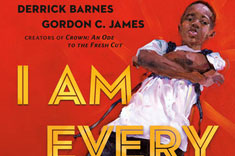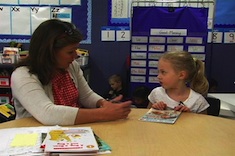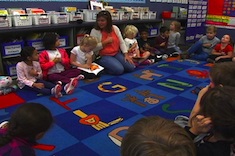“Mrs. Parks, they are wearing masks like us,” came a soft voice from my laptop. I paused to look at the thumbnail images of faces that filled my Zoom screen and saw that Hailey was unmuted and looking at the read aloud intently.
“Yes,” I replied, “they are wearing masks just like we do.” We paused on that page to talk about and notice the different people and the different jobs represented, and to notice the masks the characters were wearing.
Read alouds are different on Zoom. They are quieter, since most students are muted to keep the sounds of their home from interrupting the story. Students have the option to unmute and share, but most of the comments come at the end of the story and are prompted by me, because we can’t call out our thoughts as easily on Zoom.
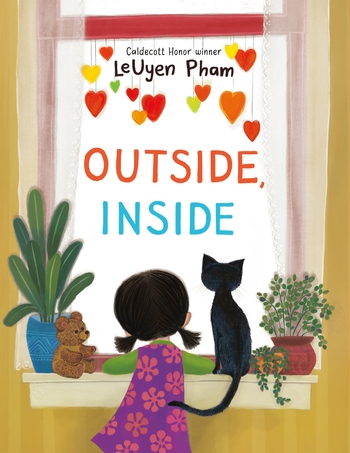 I was excited to share LeUyen Pham’s new book Outside, Inside with my students. When I first cracked it open and read it to myself, I felt emotion bubbling up. Reading this version of our quarantine experience allowed me to think about and remember what we have been through and are still going through. The gentle text gave me a moment to reflect on how hard this has been, and also captured the hope I feel. I couldn’t wait to see my students’ reactions and hear their thoughts and their stories.
I was excited to share LeUyen Pham’s new book Outside, Inside with my students. When I first cracked it open and read it to myself, I felt emotion bubbling up. Reading this version of our quarantine experience allowed me to think about and remember what we have been through and are still going through. The gentle text gave me a moment to reflect on how hard this has been, and also captured the hope I feel. I couldn’t wait to see my students’ reactions and hear their thoughts and their stories.
As I began reading Outside, Inside, I expected kids to share their quarantine stories and the feelings that came with the experience. I hoped that they would see themselves in the characters from all over the world, of all colors and backgrounds. Hailey’s comment surprised me, though. It reminded me of how children are such great observers and noticers of the details. They take in these details and begin to form their understanding of the world around us. It reminded me of the importance of seeing themselves in the books that we read, not just the color of their skin but also their experiences. Hailey’s comment solidified the importance of these experiences being depicted positively and represented in my classroom library.
Examining my classroom library is not new work for me. I’ve been trying to modify and refine my collection continuously as my awareness and knowledge grows. This year our district is engaging in anti-racist/anti-bias work with regular professional development. As a staff we are digging deep into implicit bias: to understand it, to uncover our own, to work toward changing our biases and refining our practice.
As I’ve become more aware that the associations that contribute to implicit bias are internalized at a young age, I have felt an urgency to adjust my read alouds and my classroom library even faster. Books are at the heart of my teaching, and they can have a direct effect on the biases my students are developing. My library and book choices can directly contribute to decreasing racism. I’m excited to dive back into my library shelves and ask myself these questions:
- Are the characters from varied cultures and backgrounds? Are the characters representative of my class? my school? our community and the world?
- How are these characters dressed, and what is the setting they are placed in? Are different cultures represented in positive situations?
- Are the authors also of various cultures and backgrounds?
- Does my library offer an assortment of experiences for students to connect to and/or learn about?
- Where are the holes for the above questions?
- And finally, the details… Look closely: Are the details (secondary characters, settings, names, and so on) in the texts reinforcing all the hopes I have for my library?
Reading aloud and sharing texts that have multicultural characters, perspectives, and experiences is more than giving students the opportunity to see themselves in the text. It is helping all of my students construct implicit biases that are more progressive and inclusive.
A year ago, if I had read a book with characters wearing masks, we may have had a discussion about it, defining and describing masks and their purposes. Mask wearing may have been an unknown to many students and may have seemed a little strange. But on this day, the illustrations with mask wearers allowed students to connect and to see themselves. And, at the same time, to continue widening their understanding of others and the world.



